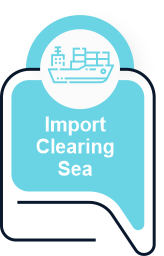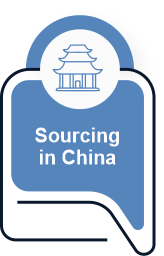Export Procedure in India
About the Rice Export Procedure in India
India is one of the world’s leading producers and exporters of rice. In fact, the country is responsible for around 10% of the world’s rice production. Every year, India exports millions of tonnes of rice to countries all over the world. There are a number of reasons why countries import rice from India. Firstly, Indian rice is very high quality and is suitable for a variety of dishes. Secondly, it is relatively cheap compared to other types of rice. Finally, India is a large producer of rice, so there is always a reliable supply. If your country is looking to import rice, then India should definitely be your first choice!
This article aims to explain what the export procedure looks like and what steps need to do followed before exporting Rice from India. In this article, you will learn how to export Rice from India.
In addition, our company offers the best export services in India. If you would like to know about the rice export procedure in India. So, please contact us. We can be reached at +91-9311595648 or at cargodeal@falconfreight.com.
How to Export Rice from India?
Are you planning to export rice from India for the first time? If yes, then you must be aware of the various guidelines and procedures that are to be followed. Here is a brief guide that will help you with the process of exporting rice from India:
- The first step is to obtain a registration certificate from the Export Inspection Council of India (EIC).
- You will need to obtain a No Objection Certificate (NOC) from the Agricultural and Processed Food Products Export Development Authority (APEDA).
- You will also need to get an export license from the Directorate General of Foreign Trade (DGFT).
- Once you have all the necessary documents in place, you can approach any of the registered rice exporters in India and get your rice export business started.
What Are The Steps Involved In Exporting Rice From India?
Rice is one of the most important crops in India and is exported to many countries around the world. The export process can be complicated, but with the right knowledge and guidance, it can be a smooth and profitable experience. Here is a step-by-step guide to exporting rice from India:
- Choose your market: Before you start the export process, you need to decide which markets you want to target. Research the demand for Indian rice in different countries and identify potential buyers.
- Obtain the necessary licenses: You will need to obtain an Export License from the Directorate General of Foreign Trade (DGFT) and a Rice Export Certificate from the Ministry of Commerce.
- Find a reliable partner: Once you have chosen your market, you need to find a reliable partner who can help you with the export process. This could be a rice mill, trading company, or other organization with experience in exporting rice.
- Negotiate contracts: Once you have found a partner, you need to negotiate contracts detailing the price, quantity, delivery date, and other terms of the sale. It is important to have everything in writing to avoid any misunderstandings later on.
- The shipment is then sent to the buyer, typically via sea transport.
- Once the Rice arrives at its destination, it must clear customs before the customer can have a delivery.
Additionally, to find out more about rice export in India to other countries. Call us at +91-9311595648 or email us at cargodeal@falconfreight.com. We would be happy to assist you! Our support services are available 24 x 7.
What are the Regulations and Laws on Exporting Rice from India?
Some regulations and laws govern the exporting of rice from India. The Export (Quality Control and Inspection) Act, of 1963, is the primary legislation covering rice export from India. Before rice can be exported out of India, it must meet inspection and quality control requirements.
The Agricultural and Processed Food Products Export Development Authority (APEDA) is the agency responsible for enforcing the Export (Quality Control and Inspection) Act. APEDA has several quality standards to be met for the rice exported from India. These standards cover aspects such as grading, packaging, and labeling.
To export rice from India, exporters must obtain an export license from APEDA. Only exporters who meet the required quality standards are granted this license.
The Rice Export Promotion Council (REPC) is another organization that is involved in regulating the export of rice from India. REPC works to promote the interests of Indian rice exporters and help them to comply with all relevant regulations and laws.
As India is one of the world’s leading producers and exporters of rice, it’s important to be aware of the regulations and laws governing the export of this commodity. Here’s an overview of what you need to know when exporting rice from India. Under Indian law, rice can only be exported by registered companies that have obtained an export license from the government. The export of rice is also subject to some quotas and restrictions, as well as inspection by the Indian Export Inspection Agency. When shipping rice overseas, you’ll need to provide a certificate of origin from the country of origin (India) as well as a phytosanitary certificate from the Indian Plant Protection Organization. Your shipment will also need to be accompanied by an invoice detailing the value of the goods being shipped. It’s important to understand all relevant regulations and laws when exporting rice from India to avoid delays or problems with your shipment.
Which Country Imports Rice From India?
India is one of the world’s leading producers and exporters of rice. In fact, rice export from India has been increasing steadily in recent years, reaching a value of over $4 billion in 2016. India is now the second largest exporter of rice in the world, behind only Thailand. There are a number of reasons for this increase in rice export from India.
First, India has a large population and thus a large domestic market for rice. This means that there is always a demand for Indian rice, both from within the country and from abroad.
Second, India has a wide variety of climates and soils, which makes it possible to grow a wide range of different types of rice. This gives Indian farmers a competitive advantage in the international market. Finally, the government of India has been supportive of the rice export industry, providing subsidies and other forms of assistance to farmers and exporters. This has helped to make India one of the most competitive suppliers of rice in the world market. There are many countries that import rice from India, including Bangladesh, Vietnam, Indonesia, Philippines, Sri Lanka, Nepal, United Arab Emirates, Saudi Arabia, Kuwait, and Iran. These countries all have large populations and high demand for rice.
Who is the Largest Exporter of Rice?
India is the largest supplier of Rice in the world. They export various types of Rice, including Basmati and Non-Basmati varieties. The Department of Commerce monitors shipments to ensure safety Rice exports must also meet the standards of the International Rice Research Institute (IRRI).
India is the world’s largest exporter of Rice. Every year, India exports millions of tonnes of Rice to countries worldwide. The rice export procedure in India is relatively simple.
Obtaining a license is the first step from the Indian government. This license allows you to export a certain quantity of Rice. Once you have the license, you can start sourcing your Rice from suppliers in India.
Once you have sourced the Rice, you must package it correctly and label it with all the required information. This includes the country of destination, the name of the importer, and the quantity of Rice being exported.
After the Rice is packaged, it must be inspected by the Indian government to ensure that it meets all quality standards. Once it has passed inspection, it can be shipped out of India and delivered to its destination.
Which Rice is the Most Exported from India?
Many different types of Rice are exported from India, but the most popular type is basmati rice. The aromatic long-grain rice, basmati, is commonly used in Indian and Pakistani cuisine. It is typically grown in the foothills of the Himalayas and is prized for its nutty flavor and fluffy texture. Other popular rice types exported from India include jasmine rice, brown Rice, and Red Rice.
Many types of Rice are exported from India, but the most popular type is basmati rice. Rice with long grains and an aromatic taste is known as basmati, which is grown in the Himalayan region. It is light and fluffy and has a nutty flavor that many love. Other popular rice types exported from India include jasmine rice and basmati rice.
Indeed, you would like to know more about basmati rice exporters in India. So, contact us at +91-9311595648 or cargodeal@falconfreight.com. We would be happy to assist you! Our support services are available 24 x 7.
MORE FROM OUR SERVICES









